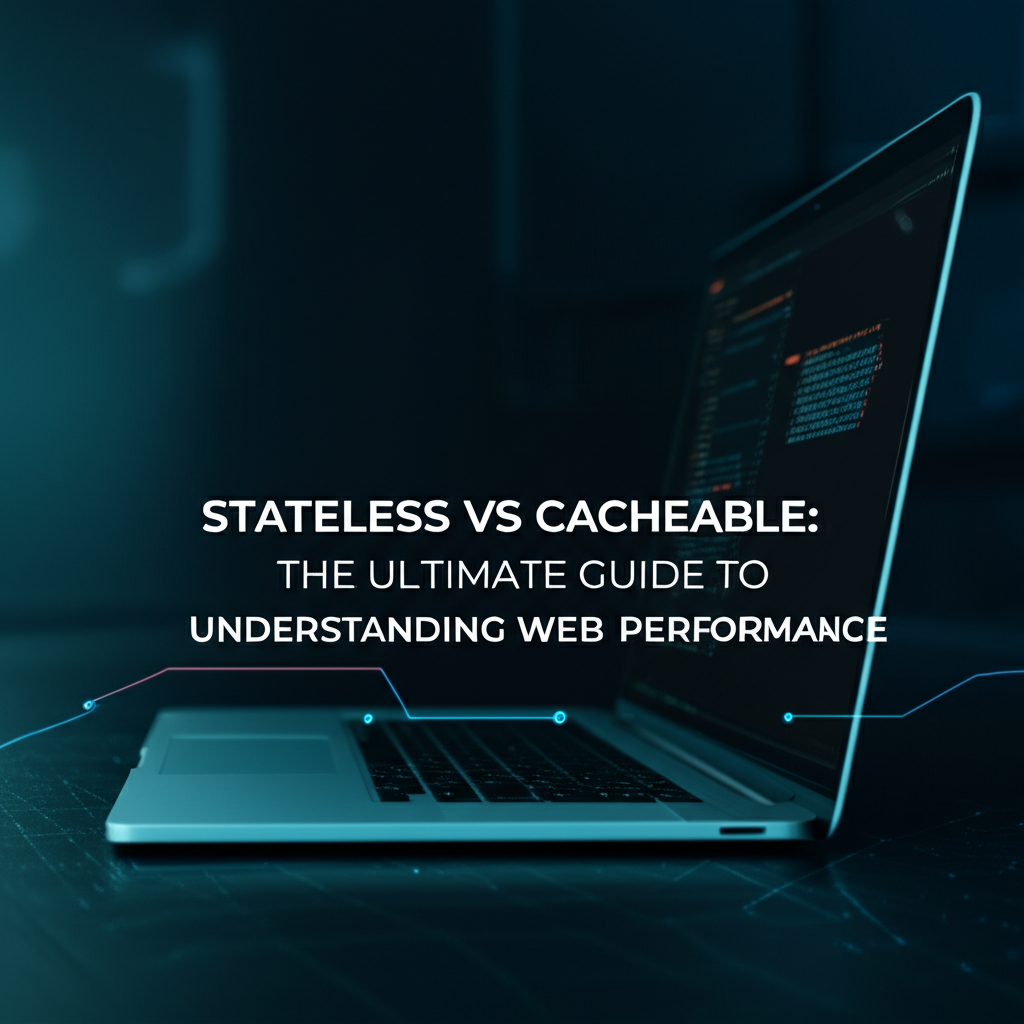Stateless vs Cacheable: The Ultimate Guide to Understanding Web Performance

Introduction
In the world of web development, performance is king. It's the deciding factor that can make or break user experience, affect SEO rankings, and ultimately impact the success of your business. Two critical concepts that play a significant role in optimizing web performance are stateless and cacheable designs. In this comprehensive guide, we will delve deep into these concepts, their implications, and how they can be leveraged to enhance the performance of web applications.
Stateless Design
Definition
A stateless design is one where each request from a client to a server is treated independently of any previous request. In other words, the server does not retain any state information about the client between requests. This approach is fundamental to the design of the web itself, which is inherently stateless.
Advantages
- Scalability: Stateless architectures are easier to scale horizontally, as you can add more servers to handle increased load without needing to synchronize state between them.
- Simplicity: The absence of state simplifies the design and implementation of the server-side logic, making it easier to maintain and debug.
- Fault Tolerance: Since there's no state to persist, if a server fails, it's easier to recover without losing any information.
Disadvantages
- Session Management: You need to implement mechanisms to manage user sessions, such as cookies or tokens, which can add complexity.
- Performance Overhead: The overhead of managing sessions or state information on the client side can impact performance.
Cacheable Design
Definition
A cacheable design involves storing the results of expensive operations, such as database queries or computations, in a cache so that subsequent requests for the same data can be served quickly without repeating the expensive operation.
Advantages
- Reduced Latency: By serving data from the cache, you can significantly reduce the latency of data retrieval.
- Increased Throughput: Caching can handle a higher volume of requests, improving the overall throughput of the system.
- Cost Efficiency: Caching reduces the load on databases and other backend services, potentially saving costs on infrastructure.
Disadvantages
- Complexity: Implementing and managing a cache requires careful consideration to ensure data consistency and avoid stale data.
- Storage Limitations: Caches have limited storage capacity, and decisions about what to cache and for how long can be challenging.
APIPark is a high-performance AI gateway that allows you to securely access the most comprehensive LLM APIs globally on the APIPark platform, including OpenAI, Anthropic, Mistral, Llama2, Google Gemini, and more.Try APIPark now! 👇👇👇
Stateless and Cacheable: The Perfect Combination
When designing a web application, the goal is often to achieve both stateless and cacheable designs. This combination can provide the best of both worlds, offering scalability, simplicity, and performance.
Best Practices
- Use HTTP Headers: Implement HTTP headers like
Cache-Control,ETag, andLast-Modifiedto control how caching is handled. - Implement a CDN: Content Delivery Networks (CDNs) can cache static assets and serve them quickly to users around the world.
- Use a Distributed Cache: Consider using distributed caching solutions like Redis or Memcached for scalable caching.
- API Gateway: An API gateway like APIPark can manage caching policies and session management across multiple services.
APIPark: A Solution for API Management
APIPark is an open-source AI gateway and API management platform that can help you achieve stateless and cacheable designs for your APIs. With features like quick integration of AI models, unified API formats, and end-to-end API lifecycle management, APIPark can streamline your API development and deployment processes.
Key Features of APIPark
- Quick Integration of 100+ AI Models: APIPark allows you to integrate a variety of AI models with a unified management system for authentication and cost tracking.
- Unified API Format for AI Invocation: It standardizes the request data format across all AI models, ensuring that changes in AI models or prompts do not affect the application or microservices.
- Prompt Encapsulation into REST API: Users can quickly combine AI models with custom prompts to create new APIs, such as sentiment analysis, translation, or data analysis APIs.
- End-to-End API Lifecycle Management: APIPark assists with managing the entire lifecycle of APIs, including design, publication, invocation, and decommission.
Conclusion
Understanding and implementing stateless and cacheable designs is crucial for optimizing web performance. By following best practices and leveraging tools like APIPark, you can create scalable, efficient, and high-performing web applications.
FAQs
FAQ 1: What is the difference between stateless and stateful systems? A stateless system does not retain any information about the client between requests, while a stateful system maintains and uses state information to provide a more personalized experience.
FAQ 2: How does caching improve web performance? Caching reduces the latency of data retrieval by storing expensive operations' results, allowing subsequent requests for the same data to be served quickly.
FAQ 3: Can stateless and cacheable designs be used together? Yes, they can be. Combining stateless and cacheable designs can provide the best of both worlds, offering scalability, simplicity, and performance.
FAQ 4: What is an API gateway, and how does it help with caching? An API gateway is a server that acts as a single entry point for clients to access APIs. It can manage caching policies and session management across multiple services, improving performance.
FAQ 5: What is APIPark, and how can it help with API management? APIPark is an open-source AI gateway and API management platform that helps manage, integrate, and deploy AI and REST services with ease. It offers features like quick integration of AI models, unified API formats, and end-to-end API lifecycle management.
🚀You can securely and efficiently call the OpenAI API on APIPark in just two steps:
Step 1: Deploy the APIPark AI gateway in 5 minutes.
APIPark is developed based on Golang, offering strong product performance and low development and maintenance costs. You can deploy APIPark with a single command line.
curl -sSO https://download.apipark.com/install/quick-start.sh; bash quick-start.sh

In my experience, you can see the successful deployment interface within 5 to 10 minutes. Then, you can log in to APIPark using your account.

Step 2: Call the OpenAI API.



